介绍
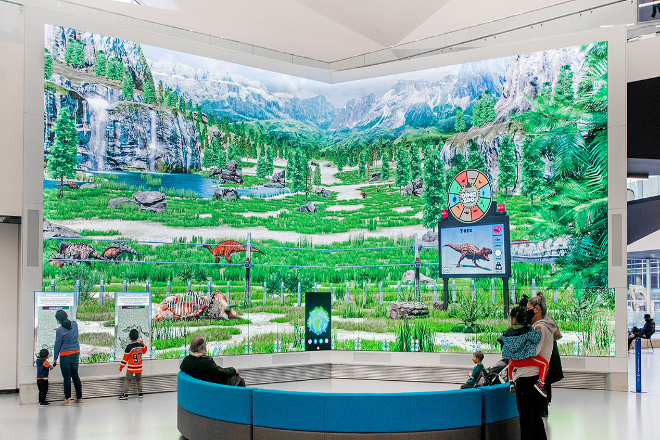
Whether in a bustling commercial center, a lively sports event, or a warm home theater, LED显示屏 attract our attention with their unique charm.
However, have you ever thought about how these two seemingly simple parameters, brightness and color temperature, affect our viewing experience?
目录
1. What effect does brightness adjustment have on the viewing effect?
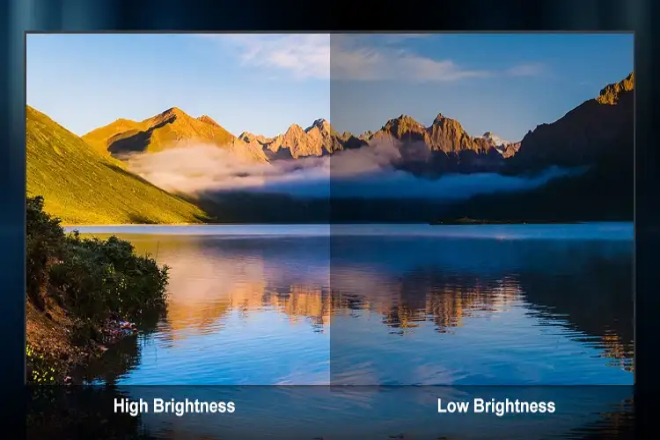
这 亮度 adjustment of the LED display screen has a particularly obvious effect on picture clarity.
Appropriate brightness can make the details of the picture clearly visible, just like looking at a photo under the right light.
The bright parts are bright, the dark parts are dark, and the layers are clear.
If the brightness is too high, the picture will be dazzling, the bright details will be gone, and the colors will become particularly fake.
Conversely, if the brightness is too low, the picture will be dark and you can’t see anything clearly, especially the dark parts, which feel blurred.
Therefore, the brightness must be adjusted appropriately so that the picture can be clear and comfortable to watch.
The brightness of LED display screen also has a great impact on the comfort of the eyes. The right brightness is like giving the eyes a “just right” environment, and you won’t feel tired after watching for a long time.
But if the brightness is too high, the eyes will be like being dazzled by strong light all the time, and the pupils will shrink all the time.
After a long time, the eyes will be dry and painful, and they even have a headache.
The same is true if the brightness is too low. The eyes have to work hard to distinguish the picture, and adjusting it back and forth will also be very tiring.
Therefore, only when the brightness is adjusted properly can the eyes be comfortable and not tired of watching things.
The brightness adjustment of the LED display screen is also critical to the color.
The right brightness can make the color look very natural, with bright places where it should be bright, dark places where it should be dark and clear layers.
If the brightness is too high, the color will become particularly bright, even a little “overdone”, and red and blue are most easily affected, and look particularly fake.
If the brightness is too low, the color will appear particularly dim, the contrast will be gone, and the picture will be like a layer of dust.
Therefore, only when the brightness is adjusted properly can the color look good and the picture have texture.
The brightness of the LED display can also be adjusted according to the ambient light so that the screen can be seen clearly in various scenes.
For example, in a dim room, if the brightness is lowered, the screen will look comfortable and will not affect others.
But if it is under the sun, the brightness is too low and nothing can be seen clearly. At this time, you need to increase the brightness so that the picture can be clear.
Appropriate brightness adjustment can make the screen easy to use in different environments without worrying about unclear or glaring.
2. What effect does color temperature adjustment have on the viewing effect?

色温 directly affects the color effect of the screen display.
If the color temperature is low (around 3000K), the screen will be yellowish and warmer, red and yellow will look brighter, and the overall picture will give people a warm and soft feeling.
This color temperature is suitable for displaying warm-toned content, such as food advertisements (to make food look more tempting) or home environments (to create a warm atmosphere).
But if the color temperature is high (such as around 9000K), the screen will be bluer and colder, blue and green will be more prominent, and the overall picture will look fresher and brighter.
This color temperature is suitable for displaying cold-toned content, such as technology products (appearing more technological) or outdoor landscapes (making the blue sky and the sea more realistic).
Simply put, the color temperature determines whether the color displayed on the screen is warmer or colder, and different color temperatures will give the picture a completely different style and atmosphere.
Color temperature also has a great impact on eye comfort. The screen with warm color temperature (low color temperature) is softer, and the eyes will not look so tired, which is suitable for close-up and long-term viewing.
For example, when watching TV or using a computer at home at night, adjusting the screen to a warm color temperature will make the eyes more comfortable.
The screen with a cold color temperature (high color temperature) is brighter and suitable for long-distance viewing, such as outdoor advertising screens or large conference screens.
However, the blue light content of the screen with a cold color temperature is relatively high, and long-term viewing may make the eyes dry and tired and even affect sleep.
Therefore, if you use the LED display for a long time, a warm color temperature may be more suitable.
Different content has different requirements for color temperature.
For example, for content that needs to create a warm atmosphere, such as food and home furnishing, a warm color temperature (about 3000K) will be more advantageous, making the picture look warmer and more comfortable.
For content that needs clear and bright effects, such as technology products, outdoor landscapes, or data charts, cold color temperature (about 9000K) will be more suitable, making the picture look more layered and clearer.
For example, when you go to a mall to watch electronic product advertisements, the screen is usually cold in color temperature because this makes the details of the product stand out more.
And the food advertisements you see in restaurants often have warm color temperature, because this makes the food look more tempting.
3. The synergy between brightness and color temperature of LED display
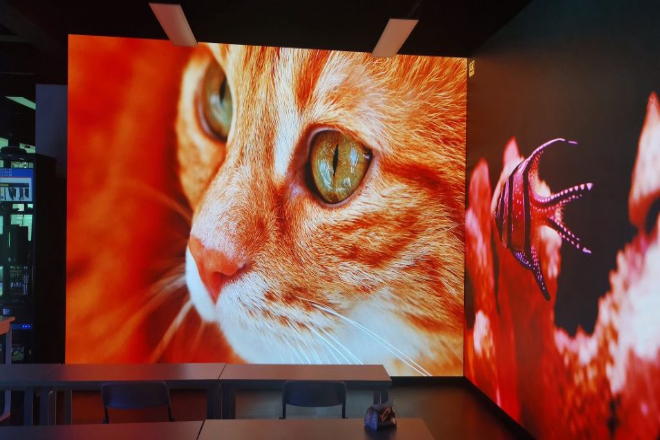
1). The relationship between brightness and color temperature
Imagine that you are in a mall and see an LED display playing an advertisement.
If the brightness of this screen is very high, the picture will appear particularly clear, but the cold tones (such as blue) will be particularly prominent, while the warm tones (such as yellow) will not be so prominent, and the overall look will be cold.
Conversely, if the screen brightness is lowered, the warm tones will be more prominent, the brightness of the cold tones will be reduced, and the overall picture will be warmer.
This is why the color temperature looks warmer at low brightness and cooler at high brightness.
2). The best brightness and color temperature combination for different scenes
2.1). Commercial display:
例如,在一个 购物中心, an LED display is used to display goods. If the brightness is too low, the details are not clear; if the brightness is too high, it will be dazzling.
Therefore, it is more appropriate to have a brightness of 1000-3000 nits and a color temperature of 5000K-6500K.
This way, the details of the goods can be seen clearly without making people feel uncomfortable.
For example, for a screen that displays jewelry, medium brightness, and neutral color temperature can better restore the color of the jewelry and make customers feel comfortable.
2.2). Outdoor advertising:
Imagine seeing an advertising screen on the street. If the brightness is not enough, you can’t see the content clearly.
Therefore, the brightness of the outdoor advertising screen should be at least 6000 nits, and the color temperature should be 8000K-10000K. In this way, the advertising content can be clearly displayed even in the sun.
For example, the advertising screen outside the subway station, with its high brightness and high color temperature, can ensure that it attracts the attention of pedestrians in a strong light environment.
3). How to adjust the brightness and color temperature according to the environment and content
3.1). When the ambient light is dark:
For example, in the indoor passage of a shopping mall, the surrounding light is relatively dark.
At this time, lower the brightness and color temperature, and use warm colors (such as around 3000K), which looks more comfortable and the eyes are not easily tired.
It feels warm, just like looking at things under soft light. For example, in the rest area of the shopping mall, the screen can be adjusted to this mode to make customers feel relaxed.
3.2). When the ambient light is bright:
For example, in an outdoor square, the sunlight is very strong.
At this time, adjust the brightness and color temperature to a higher level and use a cool color tone (such as 6500K or more) so that the picture will be clearer and will not be “drowned” by the ambient light.
For example, on the LED stage screen for outdoor activities, high brightness, and cool color temperature can ensure that the picture is still clearly visible under strong light.
4). Content:
4.1). Portraits or landscapes:
For example, when displaying advertisements for tourist attractions in a shopping mall, use a medium color temperature (4000K-5000K) and moderate brightness, which can better restore skin color and natural colors.
Just like looking at the scenery under natural light, the colors are more realistic.
4.2). Ice and snow scenes or technological content:
For example, when displaying futuristic content at a technology exhibition, use a high color temperature (7000K or more) and increase the brightness so that the picture will have a cold and technological feel.
4. Brightness and color temperature adjustment requirements in different application scenarios
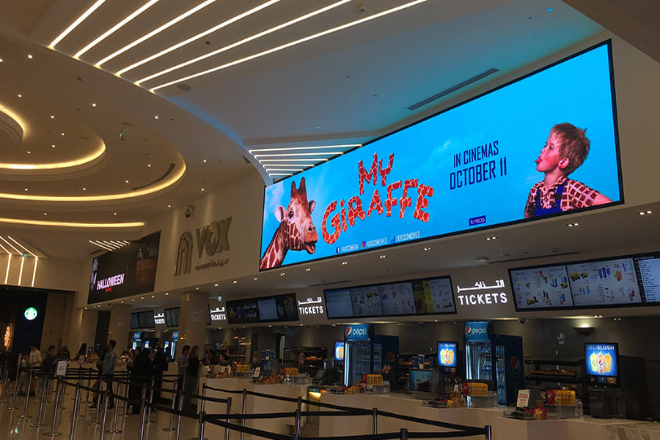
1). Indoor business environment
LED displays in shopping malls and supermarkets are really important!
For example, in large shopping malls, natural light shines in through the glass during the day and is very bright; at night, it depends on the lights in the store, and the light varies greatly.
Therefore, the brightness of the LED display must change with the ambient light, brighter during the day and slightly dimmed at night.
For example, LED displays with warm color temperature (about 3000K) can make the clothing area and food area look particularly warm, and customers will feel very comfortable.
Just like in a clothing store, a screen with warm color temperature can make the color of the clothes look softer and more textured.
And a screen with cold color temperature (about 6500K) can make the products in the electronic product area look clearer and more technological.
For example, at a mobile phone counter, a screen with a cold color temperature can make the mobile phone screen look brighter and clearer.
High-brightness and cold color temperature LED displays can be used at the entrance and promotion area, which makes it easier to attract customers’ attention.
In the clothing and food areas, using a screen with warm color temperature can make the products more “warm” and look more attractive.
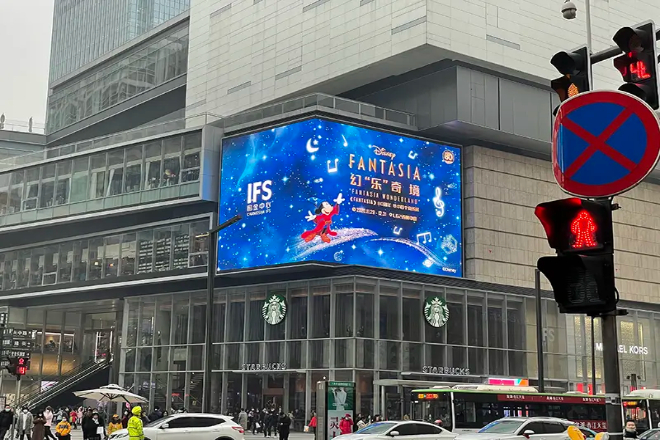
2). Outdoor advertising screen
户外LED显示屏 are not easy! For example, advertising screens on the roadside must face direct sunlight during the day and be bright enough at night to attract passers-by.
During the day, the brightness of the LED display must be adjusted to a very high level (for example, more than 1000 nits), and the color temperature must be cold (about 9000K) so that the picture will not be “drowned” in the sun and the content can be clearly displayed.
For example, on a street with direct sunlight, a screen with high brightness and cold color temperature can make the advertising content clearly visible.
At night, the brightness can be appropriately reduced, and the color temperature can be slightly warmed (about 6500K) so that it will not be dazzling and can attract the attention of pedestrians at night.
When watching from a distance, brightness and contrast are more important. Properly increasing the brightness and using cold color temperature can make the picture more prominent.
For example, on a large LED display on the side of the highway, high brightness and cold color temperature allow drivers to see the advertising content clearly from a distance.
If it is an LED display screen viewed at a close distance, such as at a bus stop, the brightness can be slightly lowered and the warm color temperature can be used to make the picture softer and more comfortable to watch.
For example, at a bus stop, a screen with a warm color temperature can make people waiting for the bus feel more comfortable and will not be dazzled by strong light.
5. What effect do these two properties have on the audience's emotions?

1). The relationship between color temperature and emotions
Color temperature is actually like the “warmth” of light, which has a great impact on people’s emotions.
1.1). Warm color temperature (2700K-4000K):
Imagine that in the rest area of a shopping mall, the LED screen is playing food advertisements, and the color temperature is warm (for example, around 3000K).
This warm color temperature is like the sun shining on the body, making people feel very comfortable and relaxed.
It is particularly suitable for displaying things that make people feel warm and comfortable, such as food and household items, which can make the audience feel particularly friendly.
1.2). Cold color temperature (5000K-10000K):
For example, at a technology exhibition, the LED screen displays the latest electronic products, and the color temperature is cold (for example, around 7000K).
This cold color temperature is like the morning sun, which makes people feel refreshed, and their attention can be focused at once.
It is particularly suitable for displaying things with a strong sense of technology, which can make the audience feel that the product is very high-end and futuristic.
2). The impact of brightness on emotions
Brightness is also critical. Appropriate brightness makes people feel comfortable, while inappropriate brightness makes people uncomfortable.
2.1). Moderate brightness (1000-3000 nits):
For example, in a shopping mall, the brightness of the LED screen is adjusted to a moderate level (such as around 1500 nits), and the picture is clear but not dazzling.
The audience looks very natural, just like looking at things under normal light, and feels very comfortable.
2.2). Too high or too low brightness:
If the brightness is too high, such as at night, the outdoor advertising screen is dazzling (more than 5000 nits), and the audience will feel very dazzled and even a little irritated.
Conversely, if the brightness is too low (such as less than 500 nits), the picture is dim, and the audience will feel that they can’t see clearly, and they will feel a little depressed.
3). Create a specific atmosphere through brightness and color temperature adjustment
In a commercial environment, the adjustment of brightness and color temperature can create many different atmospheres.
3.1). Promotional activities
For example, when holding promotional activities in shopping malls, the brightness of the LED screen is adjusted to a higher level (about 3000 nits), and the color temperature is adjusted to a neutral and cooler level (about 6000K).
This combination can attract the attention of customers, making them feel that the event is lively and energetic, and they are more motivated to participate.
3.2). Brand display
If you are displaying a high-end brand, the brightness can be slightly lower (about 1500 nits), and the color temperature can be adjusted to a cooler level (about 7000K).
This will make the audience feel that the brand is high-end and of high quality, just like looking at a piece of art, and their mood will become focused and serious.
In short, brightness and color temperature can not only affect the audience’s visual experience but also directly change their emotions.
Through reasonable adjustments, the most suitable atmosphere can be created, making the audience feel better and more willing to participate and interact!
6. What are the effects of these two performances on the life of display devices?
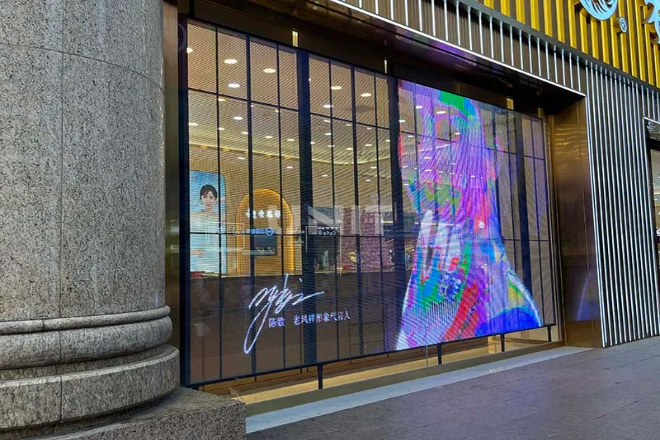
1). The impact of brightness on the life of LED display
Imagine that the LED display is like a “little sun”. If it is always turned on to the brightest, the chip inside will be like being baked, aging very quickly, and the life span will naturally be short.
For example, if you always use the highest brightness, the screen may become dim or have some minor problems in a short time. High brightness will make the chip heat up, and it is easy to “fatigue” over time.
So, don’t always adjust the brightness to the highest! Adjust the brightness according to the ambient light.
For example, indoors or at night, turn down the brightness a little; the screen will look comfortable, and the display can be used longer.
Just like people need to rest when they are tired, the display also needs to “relax.” Appropriately lowering the brightness or turning it off when not in use can extend its life.
2). The impact of color temperature adjustment on the life of the display
Color temperature adjustment will also affect the life of the LED display. High color temperatures (such as 9000K) will make the screen look particularly bright and cold.
But this also means that the chip has to work “harder,” the current is larger, the heat is more, and the life span will be affected.
Low color temperature (such as 3000K) looks warmer, the chip works more easily, and the lifespan is relatively longer.
Don’t switch color temperature frequently, which is not good for the display. Just like a person suddenly runs from a cold place to a hot place, the body can’t stand it.
The same is true for the display. Frequent switching will make the chip “stressed” and prone to problems. If you need to switch the color temperature, it is best to do it slowly, or use an intelligent system to adjust it automatically.
3). Balance between energy saving and life
Adjusting brightness and color temperature can not only extend life but also save electricity.
For example, lowering the brightness or using warm color temperature at night can not only save electricity but also make the screen last longer.
Just like driving, don’t keep pressing the accelerator. Appropriate deceleration can save fuel and make the car last longer.
There are many intelligent systems now that can automatically adjust brightness and color temperature according to ambient light.
These systems are like a “smart butler” that can automatically help you adjust, which is both energy-saving and prolongs life, which is very convenient.
七、结论
Reasonable adjustment of brightness and color temperature can not only enhance the visual experience but also extend the life of the display screen and even affect the audience’s emotions.
So, how to accurately grasp the balance between the two in practical applications? I hope this article can provide you with some inspiration.
最后,如果你想了解更多关于LED显示屏的信息, 请与我们联系。
(For a detailed article about the brightness of LED displays, 请点击这里)
